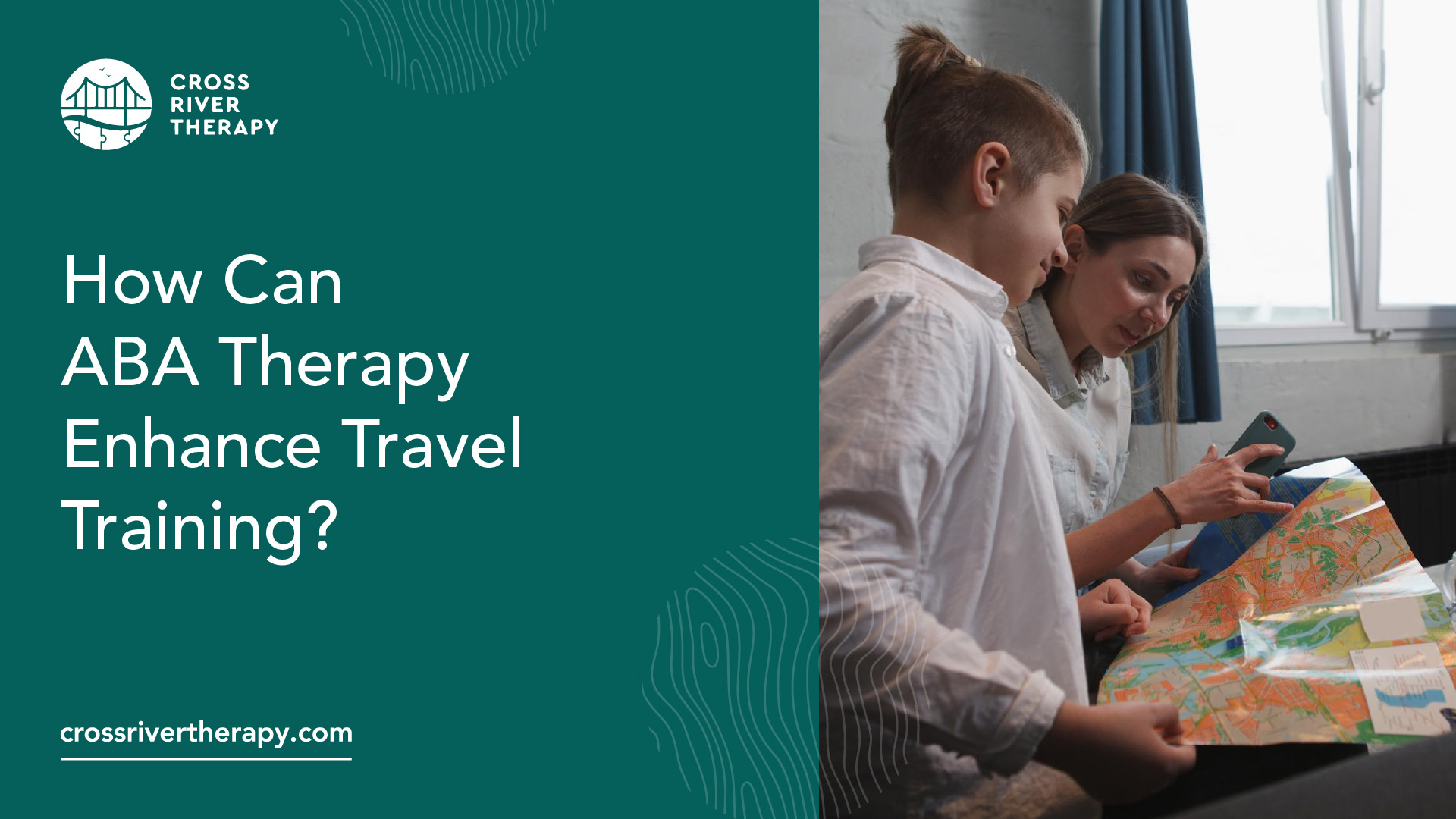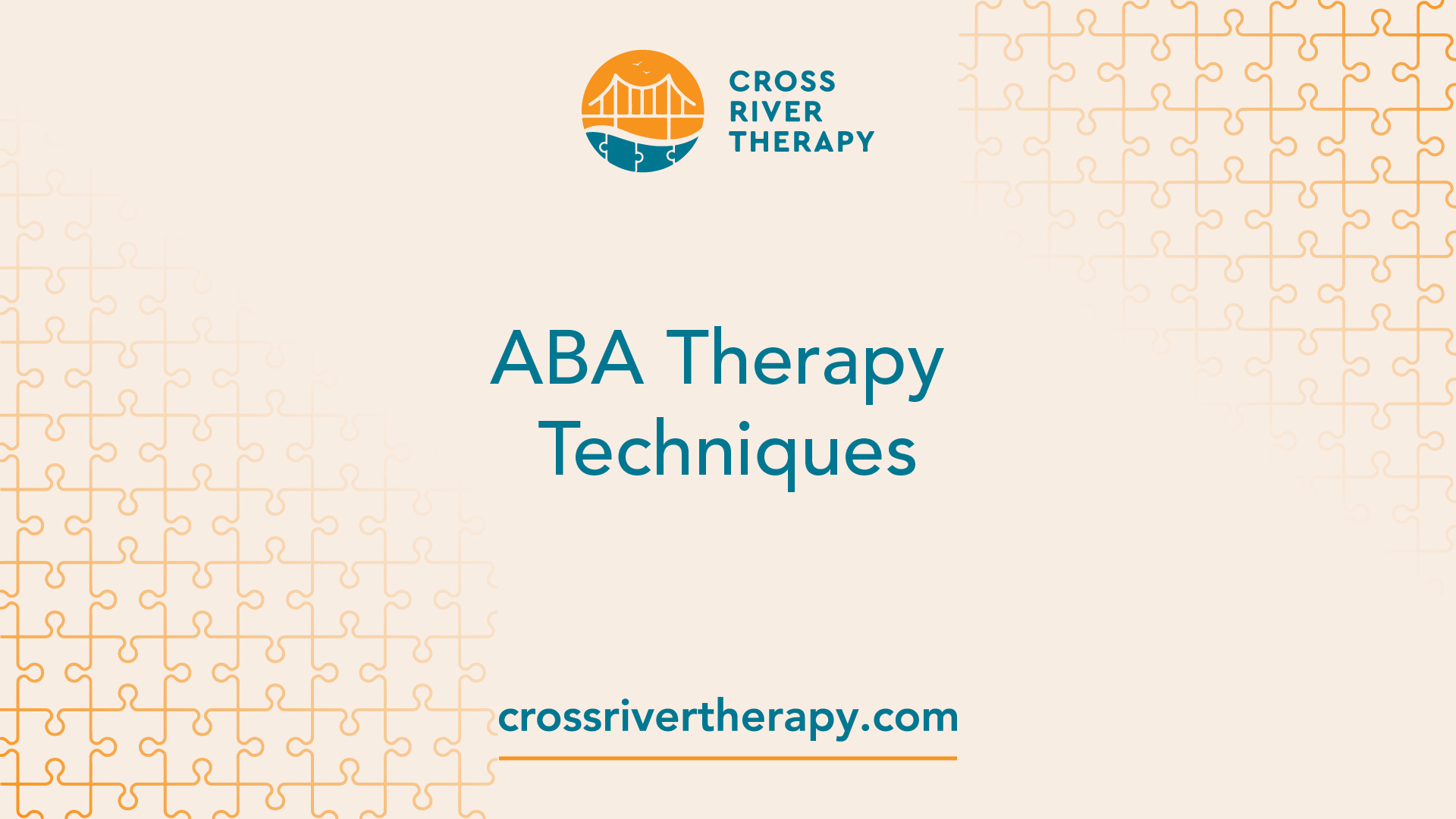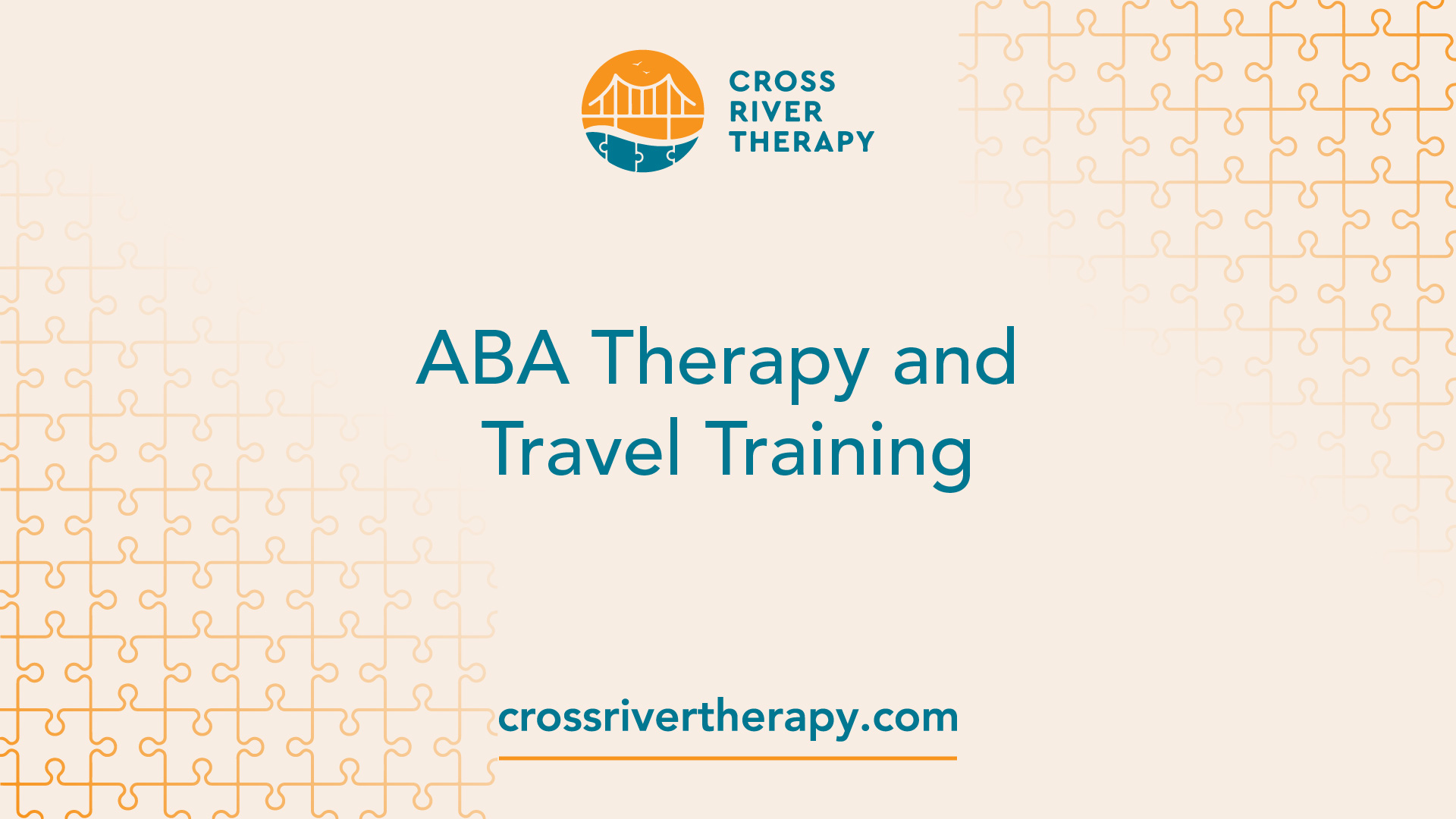How Can ABA Therapy Enhance Travel Training?
Explore how ABA therapy supports effective travel training and independence for individuals with special needs.

Understanding ABA Therapy
Applied Behavior Analysis (ABA) therapy has been a valuable approach in helping children with autism and related developmental disorders since the 1960s. This evidence-based treatment involves the application of behavioral principles to teach and reinforce desired behaviors while reducing challenging behaviors.
A board-certified behavior analyst (BCBA) designs and oversees ABA programs, customizing them with each learner's skills, needs, interests, preferences, and family situation.
Benefits of ABA Therapy
ABA is considered an evidence-based best practice treatment by the US Surgeon General and the American Psychological Association. Over 20 studies have demonstrated its effectiveness in improving outcomes for children with autism through intensive and long-term therapy.
The benefits of ABA therapy extend to various areas of a child's life, including cognitive development, language skills, social interactions, and daily living skills.
By focusing on applied behavior analysis techniques, ABA therapy aims to address deficits and promote skill acquisition in children with autism spectrum disorder (ASD). The therapy uses a systematic and individualized approach to target specific behaviors and teach new skills.
With the guidance of a trained behavior analyst, ABA therapy can help children improve their functional skills, cognitive abilities, and language development.
The core principles of ABA therapy include:
- Positive reinforcement: ABA therapy utilizes positive reinforcement to increase desired behaviors. By providing rewards or praise for appropriate behaviors, children are motivated to engage in those behaviors more frequently.
- Task analysis: ABA therapists break down complex skills into smaller, manageable steps. This allows children to learn and practice each step before moving on to the next, ensuring a gradual and systematic acquisition of skills.
- Chaining: Chaining is a technique used in ABA therapy to teach a sequence of behaviors. It involves linking individual steps together to form a complete chain of behavior, enabling children to engage in multi-step tasks independently.
- Prompts and shaping: ABA therapists use prompts to assist children in completing tasks or behaviors. Over time, prompts are faded out or modified to encourage independent performance. Shaping involves reinforcing behaviors that are closer and closer to the target behavior, gradually shaping the child's behavior towards the desired outcome.
ABA therapy has shown promising results in improving the lives of children with autism. It is a comprehensive and individualized intervention that can be tailored to meet the unique needs of each child.
By employing evidence-based techniques and strategies, ABA therapy provides valuable support and guidance for children on the autism spectrum and their families.
In the context of travel training, ABA therapy can play a significant role in helping children with autism acquire the necessary skills to navigate transportation systems, enhance safety awareness, and improve their independence. To learn more about the connection between ABA therapy and travel training, continue reading our section on ABA Therapy and Travel Training.
ABA Therapy Techniques

In the field of ABA therapy, several techniques are utilized to teach and reinforce new skills. Each technique has its own unique approach and benefits. Let's explore some of the commonly used ABA therapy techniques:
Discrete Trial Training (DTT)
Discrete Trial Training (DTT) is a structured and intensive teaching method used in ABA programs. It involves breaking down skills into smaller, more manageable components, making it easier for individuals to learn.
DTT is particularly effective for learners who have difficulty with naturalistic teaching methods and benefit from structured and repetitive instruction.
Direct Instruction (DI)
Direct Instruction (DI) is a teacher-directed teaching method that follows a step-by-step approach to teaching skills, with a focus on academic subjects such as math and reading. DI provides explicit and highly structured instruction, making it suitable for learners who struggle in unstructured settings, such as individuals with ADHD or autism.
Pivotal Response Training (PRT)
Pivotal Response Training (PRT) is a teaching method in ABA that targets pivotal or key behaviors that can positively impact a wide range of other behaviors. PRT involves identifying and teaching pivotal behaviors that serve as building blocks for other skills.
It provides a flexible and individualized approach based on the learner's needs and goals, allowing for a more personalized intervention.
Natural Environment Teaching (NET)
Natural Environment Teaching (NET) is an instructional approach in ABA that focuses on teaching skills in the learner's natural environment. This technique utilizes everyday routines, activities, and interests as contexts for teaching.
By creating meaningful learning opportunities in real-life settings like home, community, or school, NET promotes generalization of skills beyond the therapy setting.
Incidental Teaching
Incidental Teaching is a less structured intervention similar to NET, where learning is initiated by the learner's interest in an object or activity in the natural environment. This technique relies on observation, capturing teachable moments, and reinforcement for skill acquisition and generalization.
Incidental Teaching allows for flexibility and is particularly effective at promoting spontaneous communication and social interaction.
These ABA therapy techniques play a crucial role in teaching and reinforcing various skills in individuals with autism spectrum disorder (ASD) and other developmental disabilities. A skilled ABA therapist will choose and adapt techniques based on the individual's needs and learning style, creating a personalized and effective intervention plan.
By incorporating these techniques, ABA therapy can enhance travel training and help individuals with ASD gain the necessary skills for independent travel. For more information on ABA therapy techniques and their applications, continue reading our article on ABA therapy and travel training.
ABA Therapy Components
When it comes to ABA therapy, several components work together to create an effective and comprehensive treatment approach. These components include family involvement, task analysis, chaining, and prompts and shaping.
Family Involvement
Family involvement plays a crucial role in the success of ABA therapy. Parents, family members, and caregivers are encouraged to actively participate in the therapy process.
They are taught basic ABA principles and strategies to ensure that new skills and behaviors generalize across different settings, such as home and community environments. By involving the family, the skills learned during therapy can be reinforced and practiced consistently, leading to more significant progress for the child [3].
Task Analysis
Task analysis is a fundamental component of ABA therapy. It involves breaking down complex activities or skills into smaller, more manageable steps.
By breaking tasks into smaller components, it becomes easier for the child to learn and master each step before moving on to the next. Through task analysis, therapists can systematically teach and reinforce the individual steps, gradually leading to the mastery of the entire task.
This approach helps children develop a clear understanding of the sequential nature of activities and promotes independent functioning.
Chaining
Chaining is a technique used in ABA therapy to teach children the steps involved in completing a task analysis. There are two main types of chaining: forward chaining and backward chaining.
In forward chaining, the therapist teaches the child to complete the first step of the task analysis independently. Once the child has mastered the first step, the therapist provides assistance with the subsequent steps until the entire task is completed.
In backward chaining, the therapist initially provides assistance with all the steps except the last one. As the child progresses, the therapist gradually fades assistance until the child can complete the entire task independently.
Chaining allows children to learn and practice a series of steps, ultimately leading to increased independence in task completion.
Prompts and Shaping
Prompts and shaping are techniques used in ABA therapy to help children learn and master new skills. Prompts provide additional cues or assistance to guide the child's behavior or response.
As the child becomes more proficient, the prompts are gradually faded or removed to promote independent performance of the skill. Shaping involves reinforcing successive approximations of the desired behavior or skill until the child achieves the target skill.
By using prompts and shaping, therapists can scaffold the child's learning, facilitating the acquisition of new skills and promoting generalization to different situations and environments [3].
By incorporating these components into ABA therapy, children with autism spectrum disorder (ASD) can receive targeted and individualized intervention to develop essential skills and behaviors. ABA therapy focuses on improving functional skills, enhancing cognitive abilities, and fostering language development, allowing children to reach their fullest potential.
These evidence-based practices, including the components mentioned, have shown effectiveness in children with ASD, leading to positive treatment outcomes [3].
ABA Therapy and ASD
ABA therapy has been widely recognized as an effective treatment for children diagnosed with autism spectrum disorder (ASD) since the 1960s. This evidence-based approach focuses on improving various aspects of a child's development, including functional skills, cognition, and language.
Let's explore how ABA therapy can enhance these areas in children with ASD.
Improving Functional Skills
One of the primary goals of ABA therapy is to enhance functional skills in children with ASD. Functional skills refer to the abilities needed to navigate daily life and engage in meaningful activities.
Through targeted interventions and behavior analysis techniques, ABA therapy helps children with ASD develop essential skills such as self-care, communication, social interaction, and problem-solving. By breaking down complex tasks into smaller, manageable steps, ABA therapists can systematically teach these skills, allowing children to become more independent and confident in their daily routines.
Cognitive Enhancements
ABA therapy also focuses on improving cognitive functioning in children with ASD. Research has shown that intensive and long-term therapy using ABA principles can lead to significant gains in intellectual functioning.
By employing techniques such as Discrete Trial Training (DTT), Direct Instruction (DI), and Pivotal Response Training (PRT), ABA therapists work to enhance cognitive abilities such as attention, problem-solving, memory, and learning. These cognitive enhancements not only support academic progress but also contribute to overall cognitive development and adaptive functioning.
Language Development
Language development is a critical area of focus in ABA therapy for children with ASD. Many individuals with autism face challenges in communication and language skills.
ABA therapists utilize strategies like Natural Environment Teaching (NET) and Incidental Teaching to facilitate language development in a child-centered and naturalistic manner. These techniques encourage language acquisition, vocabulary expansion, sentence formation, and pragmatic language skills.
By systematically reinforcing desired communication behaviors and providing appropriate prompts and shaping techniques, ABA therapy promotes effective and functional communication skills in children with ASD.
The effectiveness of ABA therapy in improving outcomes for children with autism has been well-documented. It is considered an evidence-based best practice treatment by organizations such as the US Surgeon General and the American Psychological Association [1].
Studies have shown significant improvements across various domains, including cognitive, language, social/communication, problem behavior, adaptive behavior, emotional, and autism symptoms. By targeting functional skills, cognitive enhancements, and language development, ABA therapy plays a crucial role in supporting the overall development and well-being of children with ASD.
ABA Therapy and Evidence-Based Practice
When considering ABA therapy as a treatment option for children diagnosed with autism spectrum disorder (ASD), it's important to understand its basis in evidence-based practice. ABA therapy is widely recognized and supported as an effective intervention for individuals with ASD.
Let's explore the integration of evidence and expertise, the effectiveness in children with ASD, and the cost and treatment outcomes associated with ABA therapy.
Integration of Evidence and Expertise
ABA therapy follows an evidence-based approach, integrating the best available evidence with clinical expertise and client values and context for decision-making. This approach is essential for effective practice and aligns with the core tenets of ABA.
Practitioners of ABA therapy rely on scientific research, empirical data, and established principles to inform their treatment plans. By combining evidence-based practices with their expertise and understanding of individual clients, ABA therapists tailor interventions to meet the unique needs of each child.
Effectiveness in Children with ASD
Countless studies have demonstrated the effectiveness of ABA therapy in improving outcomes for children with ASD. In fact, ABA is considered an evidence-based best practice treatment by the US Surgeon General and the American Psychological Association [1].
Research has shown that ABA therapy can lead to significant improvements in various areas, including cognitive abilities, language development, social skills, problem behavior reduction, adaptive behavior, emotional well-being, and autism symptoms [4]. For instance, a study based on the UCLA Young Autism Project model revealed that 47% of children who underwent ABA treatment achieved normal intellectual and educational functioning, compared to only 2% of a control group.
Cost and Treatment Outcomes
While the cost of ABA therapy is a consideration for many families, it is important to weigh the potential outcomes and long-term benefits. The lifetime cost for families with a member diagnosed with ASD can range from approximately US$1.4 million in the United States and the United Kingdom (when diagnosed without an additional intellectual disability) to US$2.4 million in the United States and US$2.2 million in the United Kingdom (when diagnosed concurrently with an intellectual disability).
Although the costs can be substantial, ABA therapy has been shown to provide significant improvements in functional skills, cognitive abilities, and overall quality of life for individuals with ASD, making it a valuable investment for many families.
By employing evidence-based practices, ABA therapy offers a structured and effective approach to supporting children with ASD. Its integration of evidence and expertise ensures that treatment plans are tailored to meet the specific needs of each child.
With its demonstrated effectiveness and positive treatment outcomes, ABA therapy provides hope and support for families seeking interventions to enhance the lives of their children with ASD.
ABA Therapy and Travel Training

Travel training is an essential component of ABA therapy for individuals diagnosed with autism spectrum disorder (ASD). It focuses on equipping individuals with the necessary skills to navigate public transportation and safely travel within their communities.
In this section, we will explore the importance of travel training, a study on individuals with intellectual and developmental disabilities (IDD) and ASD, and the gains in travel skills achieved through ABA therapy.
Importance of Travel Training
Travel training plays a vital role in enhancing the independence and quality of life for individuals with ASD. By acquiring the skills to travel independently, individuals can expand their opportunities for employment, education, and social engagement.
Moreover, it promotes self-confidence and self-reliance, allowing individuals to explore their communities with greater freedom and autonomy.
Study on IDD and ASD
A study conducted on individuals with IDD and ASD revealed promising results regarding the effectiveness of travel training. The study included 69 men and 18 women with IDD and/or ASD, with a mean age of 23.6 years.
The structured travel training program provided participants with the necessary skills for using public transportation.
The study found that individuals with IDD made larger gains in travel skills compared to those with ASD and no IDD. However, by the end of the study, individuals with ASD and IDD achieved comparable travel skills to those with IDD alone.
This indicates that individuals with ASD can make significant progress in travel skills through targeted ABA therapy interventions.
Gains in Travel Skills
Through ABA therapy, individuals with ASD can make notable gains in travel skills. ABA therapy techniques such as task analysis, chaining, and prompts and shaping are utilized to break down the complex task of travel into smaller, manageable steps.
This allows individuals to learn and practice each step incrementally, gradually building their skills and confidence.
By incorporating ABA therapy into travel training, individuals with ASD can learn important skills such as route planning, understanding schedules and maps, using public transportation systems, and maintaining personal safety. These skills empower individuals to navigate their communities more independently, fostering greater inclusion and participation in society.
In conclusion, travel training is a crucial aspect of ABA therapy for individuals with ASD. It provides them with the skills and confidence needed to travel independently, expanding their opportunities for social interaction, education, and employment.
Through ABA therapy, individuals with ASD can make significant gains in travel skills, enabling them to explore their communities and lead more fulfilling lives.
FAQs
How does travel training help individuals?
Travel training helps individuals gain the confidence and skills needed to navigate public transportation systems, increasing their independence and mobility.
What skills are taught in travel training?
Travel training typically includes learning how to plan routes, read schedules, use transportation passes, and handle various travel scenarios.
How long does travel training take to complete?
The duration of travel training varies based on individual needs and goals but often spans several weeks to months with regular sessions.
Is travel training available for different types of transportation?
Yes, travel training can cover various types of transportation, including buses, trains, subways, and other public transit options.
How can I find a travel training program?
Travel training programs are often offered by local transit authorities, community organizations, or specialized agencies that focus on mobility and independence.
What should I expect during a travel training session?
Sessions typically involve practical exercises, such as navigating transit routes, practicing ticket purchasing, and problem-solving common travel issues.
Are there any costs associated with travel training?
Some travel training programs may be free or low-cost, while others might require a fee. It's best to inquire with local providers about their specific costs and funding options.
Can travel training be customized for specific needs?
Yes, travel training programs can be tailored to meet individual needs, including special accommodations or supports to address unique challenges and goals.
References
[1]: https://www.autismspeaks.org/applied-behavior-analysis
[2]: https://masteraba.com/aba-teaching-methods/
[3]: https://www.lumierechild.com/blog/5-common-components-of-aba-therapy-for-children-with-asd/
[4]: https://www.ncbi.nlm.nih.gov/pmc/articles/PMC9458805/
[5]: https://www.ncbi.nlm.nih.gov/pmc/articles/PMC4883454/
[6]: https://www.sciencedirect.com/science/article/abs/pii/S2214140519300738



